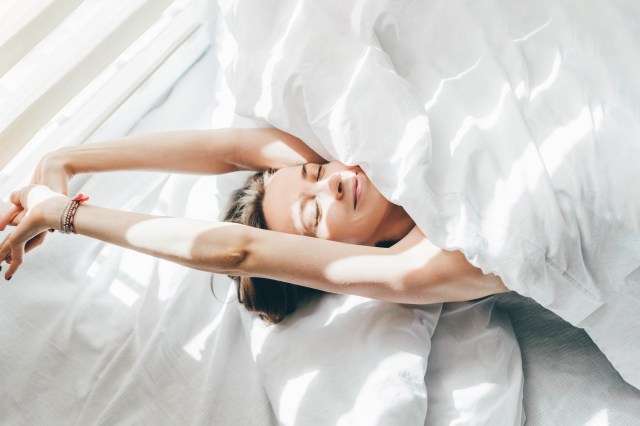Whether you’re a back, side, or stomach sleeper, we can all agree that nothing beats a good night’s rest. But even if you get a solid eight hours of sleep, you still may wake up feeling restless and achy. That discomfort may have something to do with how you align your body. Certain positions put an unnecessary strain on the neck and back, while others exacerbate the intensity of snoring. But fear not, because there are plenty of more optimal sleep positions that help your body relax and recover. While it generally varies from person to person, here are some of the best and worst sleep positions.
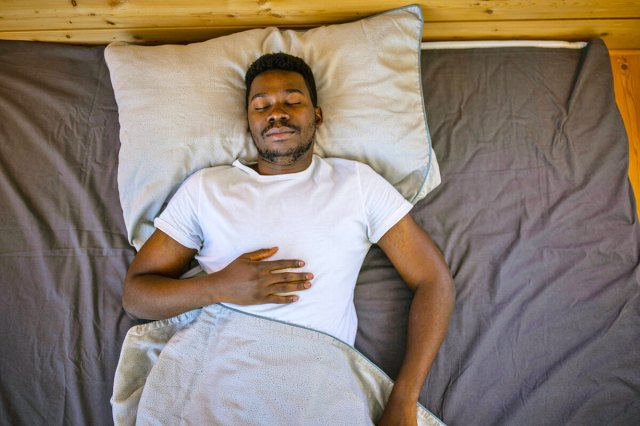
On Your Back
Lying flat on your back is the best sleep position for many individuals. Sleeping in this supine position helps lessen back pain and promotes proper spine alignment. To achieve ideal alignment, place one pillow beneath your head or neck and another underneath your knees — this helps maintain the spine’s natural curvature.
Studies have also shown that back sleepers suffer less from tension headaches and sinus pressure, which are far more common for those who sleep on their side or stomach. Sleeping on your back also helps you achieve healthier skin, as your face is less likely to come into contact with a pillow that may be dirty or oily. This reduces the likelihood of any unsightly facial breakouts that may be caused by clogged pores.
That being said, sleeping on your back isn’t for everyone. Back sleepers are likelier to snore than side or stomach sleepers, as gravity pulls the tongue toward the back of the throat. This may obstruct the airway, resulting in louder snoring than usual. It’s also recommended that pregnant individuals avoid sleeping on their backs, as doing so inhibits blood flow that’s necessary for the health of the baby.
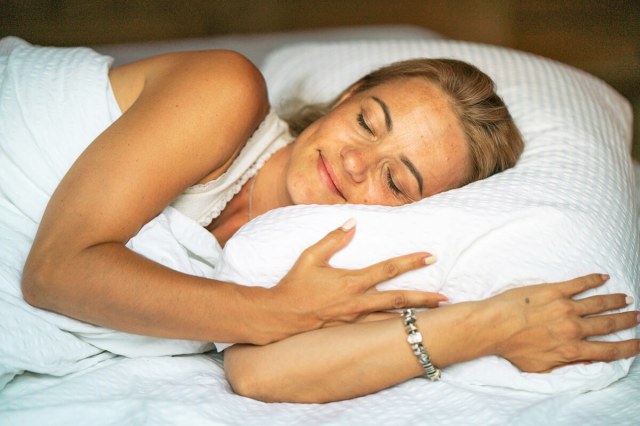
On Your Side
Sleeping on your side with your legs fully outstretched is generally considered to be the second-best position after lying flat on your back. Side sleeping is particularly good for those who suffer from sleep apnea, as it keeps the airways open and prevents blockage. This position also reduces pressure on the lower back and spine, and it even encourages proper digestive function, which can make you feel less bloated. Lastly, side sleeping is the number one recommended sleep position for pregnant people, as it lessens the pressure on the veins that pump blood to the heart and the baby.
There are, however, downsides to sleeping on your side, such as the fact that one side of your face is pressing against the pillow. This compression may cause wrinkles down the line. Side sleeping also puts extra pressure on only one side of your body, which could throw the shoulders and hips out of whack. If you wake up feeling like one shoulder is far more sore than the other, it probably has something to do with being a side sleeper.
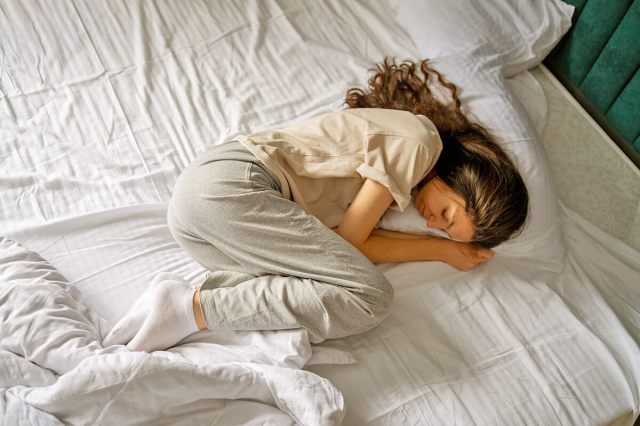
The Fetal Position
The fetal position is a side sleeping variant where you bring your knees up to your chest to form your body into a ball. While this position temporarily lessens stress on the spine, it may complicate matters down the road. The fetal position contorts the spine into an unnatural shape, which affects your posture and may lead to worsening back pain. This position may also exacerbate knee and hip pain because those joints are flexing throughout the night.
Reader Favorites
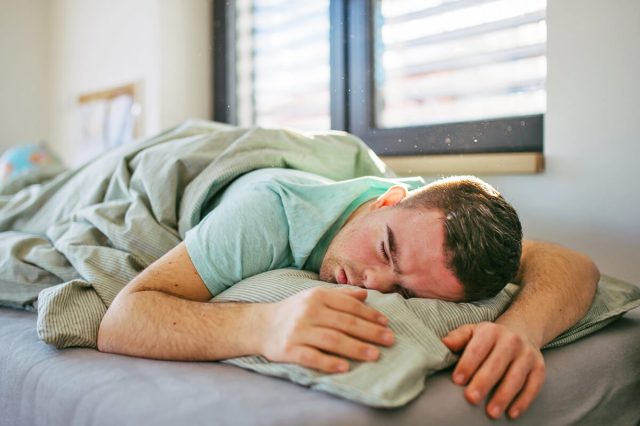
On Your Stomach
Another popular position is sleeping on your stomach. Much like side sleeping, this can lessen the intensity of your snoring for those who struggle with sleep apnea. That’s because gravity pulls the tongue away from the windpipe. Stomach sleeping may also help those who struggle with acid reflux, as it keeps harmful stomach acids far away from reaching your esophagus.
The benefits of sleeping on your stomach, however, are few and far between. Many sleep scientists recommend that you avoid this position altogether. When sleeping on your stomach, you’re negatively affecting the spine’s position by twisting it into an unnatural shape. This may impact the nerves around your spine, which leads to tingling and numbness throughout the body. Sleeping on your stomach also puts stress on the neck and back muscles, which contributes to general discomfort from head to toe.
More From Our Network
Better Report is part of Inbox Studio, which publishes content that uplifts, informs, and inspires.














